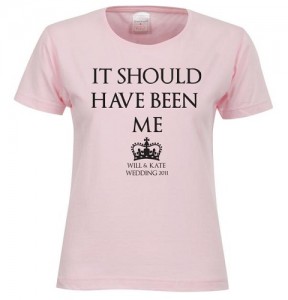On my way to the US to escape the Royal Wedding, I killed time by selecting the King’s Speech on the in-flight movie. Having somehow conspired to miss Colin Firth’s Oscar winning portrayal of George VI the first time round I was keen to see it for myself and judge whether he deserved his garlands.
I don’t consider myself a blubber, but by the time Firth emerged from the sound studio at Buckingham Palace I don’t mind admitting I was in tears. The odd thing was the following morning my lachrymosity had worsened. Awaking bleary-eyed at 6am to catch a glimpse of ‘that dress’, I wept buckets as Michael Middleton escorted his daughter up the aisle before offering her up to Wills and a grateful nation. In my semi-comatose state I was even prepared to overlook Piers Morgan’s disingenuous commentary for CNN and his ludicrous declaration that ‘the British monarchy was back’.
As a republican and someone who studies emotions for a living, I ought to be immune to such sentimental claptrap. That I am not cannot simply be put down to jet-lag and being far from home.
Royal weddings, like Firth’s artful portrayal of George VI, are a performance. To succeed they must persuade us not only to suspend disbelief but to invest in the delusion that but foran accident of birth we too could be walking up the aisle or, in my case, giving away my daughter’s hand in marriage.
Just as the hypnotist uses suggestion to achieve mastery over his mesmeric subject, so the Windsors beguile us, their subjects, with an artful combination of pageantry and a narrative rich in symbolic portents. No matter that we have been here before. Unlike in 1981 when Charles married Di, this time we are told the fairytale really has come true.
I have no idea whether it is true romance this time but on April 29th, like billions of others watching around the globe, I suspended disbelief and surrendered to the emotion of the occasion. Though isolated and alone in my hotel room, thanks to the magic of TV I felt intimately connected to the crowds camped outside the Abbey and along the Mall – hence when they cried, I cried too.
Such emotional expressions, I would argue, are mere reflexes, involuntary responses to the power of ceremony and ritual to move us in mysterious ways. As the King’s Speech showed, communications technology is crucial to this process. The advent of radio massed people in new ways, allowing both the house of Windsor and Adolf Hitler to reach out to and manipulate what Gustave le Bon called the ‘crowd mind’. By contrast, in the Victorian era, when news of a royal marriage or death was conveyed by the electric telegraph mass outpourings of joy or grief were less predictable — and usually delayed until the following morning.
In the modern era, of course, thanks to television and the internet, the process is virtually instantaneous. When Charles married Di, for instance, it is said that during the dull bits, such as the signing of the register when people got up to boil their kettles, the National Grid became ‘a barometer of national feeling’. In April 2011 the best barometer was You Tube’s ‘Royal Wedding channel’ where at time of writing Kate and Wills’s kiss on the Buck palace balcony has registered in excess of two million views. Like the Westminster Abbey verger Ben Sheward’s spontaneous cartwheels of joy along the red carpet (544,000 views to date), these ‘moments’ of emotion now appear on an endless loop, captured for posterity. Watching them in 100 years time, I wonder what historians will make of them and whether they will weep in sympathy or shake their heads with incredulity.
Mark Honigsbaum


I never thought of it that way, well put!
Is it alright to put a portion of this in my personal weblog if I publish a reference to this site?
should think so, yes.